- Home
- Thomas Cahill
Mysteries of the Middle Ages Page 4
Mysteries of the Middle Ages Read online
Page 4
In the year 313, less than a century after Clement’s time, Christianity was given protected legal status by the Emperor Constantine. Throughout the fourth century, increasingly bellicose theological controversy clanged along Alexandria’s splendid avenues. Arius, a priest of the city, proposed that Christ the Logos was like God but less than God. Athanasius, the implacably contentious patriarchal bishop, opposed Arianism with such vehemence that he was five times exiled from the city. Arius himself collapsed one day in an Alexandrian street and died of epilepsy. In the end, Athanasius was victorious, and his formula for describing Christ—homoousios patri (of the same substance as the Father)—became the enduring formula of orthodox Christianity.
Before the fourth century was out, Christian vigilantes attacked the Temple of Serapis, center of the city’s pagan cult, and in the process destroyed countless volumes of the great Library that were stored in the cloisters surrounding the buildings of the Temple. (Ah well, but the demonic Temple was destroyed, that was the main thing—and, anyway, most of the books weren’t worth reading, don’t you know.) In 415, a wild-eyed army of illiterate, black-cowled monks filled the streets of Alexandria like so many crazed bats, “human only in their faces.” In a sense, they were the prototype for all the mobs of religious fanatics that sweep through history. One of their number had already stoned the imperial prefect and been canonized for his deed by Cyril, Athanasius’s successor as holy patriarch.h Now they encountered Hypatia, a philosopher and mathematician, on her way home from lecturing at the Mouseion. She was a pagan teacher, an unescorted woman; she did not bow to their beliefs. She lured impressionable young Christians to her lectures; she consorted with Jews; she had dared to speak against the patriarch. She practiced who-knows-what obscenities. They dragged her from her carriage and into the cathedral, where they stripped her, gouged her eyes out, skinned her alive, and tore her to pieces with jagged tiles ripped from the mosaics.
By this time, the Gnostics had been read out of the churches, some of Origen’s teachings had been condemned either as pagan philosophy or as Arian heresy, and the ancient ideal of the city as bastion of balanced reasonableness was long buried. But in the spectral, screeching monks, the Encratites had triumphed.
a The original Library, called the Mother, was much enlarged under Ptolemy Soter’s son and heir and was thereafter called the Daughter. The Library was burned three times, first in 47 B.C. by Julius Caesar (who accidentally set fire to some storerooms in the course of a battle), then deliberately and more extensively by a Christian mob toward the end of the fourth century of our era, and finally in A.D. 642 by the forces of Caliph Omar. At its greatest extent it may have contained considerably more than half a million separate texts—which astonishing abundance alone accounts for its legendary status throughout the ancient and early medieval world.
b Plato is an important subject in How the Irish Saved Civilization, Chapter II (“What Was Lost: The Complexities of the Classical Tradition”), and the chief subject of Sailing the Wine-Dark Sea, Chapter V (“The Philosopher: How to Think”).
c These late compositions—principally Esther, Judith, 1 and 2 Maccabees, Wisdom, Ecclesiasticus (or Ben Sira), Baruch, Tobit, and three additions to Daniel that are extant only in Greek—have been accounted differently by different religious communities in the course of Judeo-Christian history. The church fathers of the fourth century A.D., who issued the first definitive “canon” of the Bible, regarded all of them as divinely inspired, as the Orthodox and Catholic churches continue to do. Later Jewish and Reformation traditions accept only Esther (in a shorter—and older—Hebrew version) and consider the other compositions “apocryphal.” The order of books within the Bible could not be fixed till after the invention of the codex (or bound book, as we still know it), since before that time writings were kept not in order within a single volume but in a cabinet of multiple scrolls. But even in the days of Jesus, centuries before the codex, “The Torah [or Law of Moses] and the Prophets” was the common phrase for referring to the Hebrew scriptures. What was neither Torah nor Prophets was included among the nondescript “Writings,” as the third (and last) division of the scriptures. These are the three divisions still maintained in order in Jewish Bibles. Christian Bibles, however, place the books that Jews count as the Latter Prophets at the end of the “Old Testament,” so that these may more easily be read as prophesying the coming of Jesus, whose story appears immediately afterwards at the beginning of the “New Testament.”
d The Trinity is commonly regarded among Christians as deriving exclusively from the inspired revelation of the New Testament, especially the “trinitarian” passages in John’s Gospel and, more sparingly, in Paul’s letters. But these few passages, though suggestive, cannot yield anything like a systematic theology of the inner life of God. The early Christian apologists needed to rely on Philo’s more elaborate philosophical scheme in order to begin to make coherent sense of the hints they found in the New Testament. Philo’s Logos and Powers undoubtedly owe much to the philosophy of the Stoics, but to explore this connection would take us far afield.
e Henceforth, the text will designate B.C. dates as such; A.D. dates will be left undesignated.
f Nor were women encouraged to a life of virginity, the exception being priestesses at important shrines, who tended to “have menstrual difficulties and grow fat and ill-proportioned” (according to Soranus, a Greek gynecologist, contemporary with Galen and like him active at Rome). But consecrated virgins were often released from their vows at some point. Rome’s Vestal Virgins, for instance, were allowed to marry after thirty years of duty, even if the record is blank as to how many of these lumbering lovelies attracted spouses. At any rate, though discovery of the loss of virginity in an on-duty Vestal was cause for her to be buried alive, none of these women had ever been consulted about whether she wished to be virginal. She was basically a kinder, gentler human sacrifice, her virginity an apotropaic relict of prehistoric propitiation of the gods.
g Stoic philosophy was attractive to both Jews and Christians because it tended toward monotheism and opposed images of the divine. Furthermore, it emphasized classless human kinship, the divine element in each person, and the importance of ethical behavior and even (to some extent) social justice. The philosophy of the Epicureans, whom the Stoics saw as enemies, was deplored by Jews and Christians for its denial of divine providence and exaltation of pleasure as “the beginning and end of living happily.” Though Epicureanism was subtler than its historical caricature, there’s no getting around the fact that Epicureans would have been useless as martyrs.
h Rigid, unrelenting, intolerant leaders of the Greek church like Athanasius and Cyril would one day serve as models for certain Muslim clerics, once Islam had ushered in the next wave of religion to the Greek East, known to us today as the Middle East.
INTRODUCTION
Rome, Crossroads of the World
How the Romans Became the Italians
Rome was not built in one day.
—TRADITIONAL SAYING
LIKE PARIS FROM THE TIME OF Napoleon III to the eve of the Second World War, Alexandria was for many years the place to be, the “City of Light” in every sense. But as with all shining cultural capitals, it gave way at last to a new star. By the time of Clement, Alexandria had already lost much of its glow as men on the move, like Galen, abandoned the declining cities of the Greek Easta and were drawn inexorably west to Rome, the immense upstart that had become the capital of the world.
Rome began as the insignificant market town of a Latin-speaking tribe of sharp-eyed, closemouthed herdsmen and farmers who settled around a ford in the River Tiber, prospered in their cultivations, and flourished in their populations. The Latins overwhelmed another tribe, the Sabines, abducting their women, and were in turn overwhelmed by a more advanced people from the north, the innovating Etruscans, who gave their name to Tuscany and who, though they adopted the language of Rome’s inhabitants, expanded the rustic town by means of Greek-i
nspired public works new to the older populations: the draining of marshes, extensive pavement, city walls, and large buildings of brick and stone. The tidy but impressive result was Roma quadrata, a square, walled city whose combined population found itself in a position to capture territory far beyond its borders, which made Rome in short order the force that controlled central Italy. Besides their territorial acquisitions, the Romans steadily increased their inventory of slaves, the sinewy, silent muscle of their economy.
The political structure of this new power was composed of Etruscan kingship, an advisory council of clan chieftains called Senatus (or Meeting of Elders), and a tribal assembly of citizens. This structure would come to be called Res Publica (Public Thing), later elided—by the general Latin tendency to soften sequences of consonants—into Repubblica. But this designation veiled the purpose of Rome’s political machinery, which was operated on behalf of the leading families. In time, the role of the Senate would gain in prestige, the kingship would be replaced by an elected executive of two consuls, and the citizen assembly would wither, retaining in the end little more influence than a mob in the marketplace.
More important than the nature of the Roman political establishment, however, was the Roman temperament, an admirable stability born of relentless practicality and common sense, combined with an openness to innovation, provided the innovation was of obvious service to a practical goal. And there was but one goal, really: unspectacular but steady increase in the wealth of Rome’s leading families (and, to a lesser extent, of all her citizens) by means of territorial expansion. Never in human history has real estate been more highly prized.
By gradual conquest, the city became master of the Italian peninsula; by the beginning of the second century B.C., she had added Spain, northwest Africa, southern Gaul, Sicily, Sardinia, and Corsica to her possessions. Naturally adept at military strategy and expert at administration and accounting, the Romans ruled their new possessions frugally and reasonably; and ever more wealth flowed to the mother city from taxes and trade. As coin poured in, so did exotic goods and people, as well as provincial families bent on keeping a house in town so that they too might sup on the excitement of urban life. The result was an enormously expanded Rome, always rebuilding her walls at further distances from the original settlement.
But in the shadow of Rome’s explosive building program a new underclass was massing, clueless, all but homeless, far more dispossessed than any slave, and easy prey to demagogues. This new proletariat included gamblers who had lost their togas in the acquisition game, fools who had spent their modest estates on evanescent luxuries, and the perennial urban poor, adept at pickpocketing, stings, and rackets but otherwise unemployable, demanding public welfare. Though the old aristocracy continued to recite its devotion to the ancient Roman virtues of order and thrift, this new class possessed but one virtue, its votes, which it sold happily enough to public figures, contentiously cutthroat in the great race for riches. Class warfare ensued, as representatives of the Populares and the Optimates—I could almost write Democrats and Republicans—struggled over the direction of the Roman Republic, each politician pretending to represent what was best for Rome, all the while grabbing whatever additional wealth he could lay his hands on. As stoical Cicero moaned over each new scandal, “O tempora! O mores!” (What times these are! What morals!)
The upshot was a civil war, then another, then a third, all fought within the first century B.C. In the end, the Republic was “saved” through its elimination and replacement by a new political order in which all power was vested in one man, Caesar Imperator (Commander-in-Chief, thence Emperor), whose empire would soon stretch from the border of present-day Iran in the east to Scotland in the west, from the entirety of north Africa in the south to the River Rhine in the north. The first emperor, Augustus,b ruled for more than forty years, setting the style for his many successors. He built the marmoreal Rome that lives in memory (and in not a few still-standing shrines and monuments, public spaces and private palaces); he accepted the honors of a god and was received as such throughout the imitation-Romes of his far-flung empire, where the most impressive buildings were often temples dedicated to Divine Caesar. (“Great is Caesar: God must be with him!”) Not for a moment was he distracted from his main purposes: the efficient administration of his vast bureaucracy, carrying the emperor’s awesome presence to every corner of his territories, and the collection of his taxes.
Augustus died in the second decade of the first century, when Jesus of Nazareth was still an unknown teenager in a dark corner of the empire. By the second century—the time of Clement and Galen—Rome had reached its zenith. Too large and diverse to be as perfect as Alexandria, it was the New York of the ancient world. Because it attracted would-be winners from everywhere, there was no food or face, no costume or custom you could not find here. If it existed somewhere in the known world, there was an example of it in the streets of this city, crossroads of the world, teeming with a population of more than a million souls, four times that of any other ancient metropolis. If you could make it there, you could make it anywhere. And if your luck ran out, you could molder in obscurity in one of the crammed and crumbling tenements that teetered noisily over narrow alleys far from the august monuments of the city’s imperial center.
Lunching one day at a favorite trattoria and watching a variety of convivial Roman families enjoy their afternoon meal and their companions at table, I wondered how the ancient Romans had ever turned into the modern Italians. Unlike many other ancient stocks, the Romans are more or less the same people they were in the time of the Caesars. Whereas the once dark-haired Irish are today much mixed with Viking genes (as the red-gold hair of many testifies), the British with Celtic, Italian, and especially German genes, and the Greeks with the genes of the Turks and the South Slavs, the Italians of today are the direct descendants of those who inhabited the Italian peninsula in the centuries before Christ, in the centuries of the Caesars, in the days of Dante, of Michelangelo, of Garibaldi, of Fiat, Loren, and Armani. More southerners (with their undoubted African, Greek, Arabian, and Norman genes) have moved north; and the gene pool of the Lombards and other Germanic tribes shows itself in the honey-colored hair, pale skin, and towering height of a few northerners, but the faces of the vast majority of Italians are the same faces that peer at us from ancient portraits in marble, metal, mosaic, wax, fresco, and coral. As an observant American friend resident in Rome remarked recently, “Only this morning I saw Julius Caesar strolling across the piazza.”
But if the Italians still look like their ancient counterparts—with their small feet and expressive hands, their well-knit bodies, their healthy skin, their shining black hair, their large noses and knowing faces, their profoundly brown eyes, their sense of personal presentation—their souls have changed considerably. These, after all, were the military geniuses who conquered the world and crucified without remorse any troublemaker who dared get in their way, who enjoyed nothing so much as an afternoon watching slaves slaughter one another in the arena or an outdoor evening frolic lit by human torches. Those soulful brown eyes were once as glazed with vindictive cruelty as human eyes have ever been.
And yet today flags of peace fly everywhere—rainbow flags petitioning for PACE against a skyblue field. To protest George W. Bush’s imperial adventure in Iraq, Italians organized the largest antiwar demonstration in world history, as many as three million protesters (by some estimates) crowding into the streets of Rome (whose normal population totals somewhat less than three million), stopping all traffic while trying to reach the event’s announced center, the enormous piazza in front of Rome’s cathedral of San Giovanni in Laterano. Most had to abandon their goal and so stood singing, dancing, and waving their flags wherever they found themselves throughout the labyrinthine streets and sunlit squares of Rome. It was a day on which one could believe in human solidarity.
Italy was one of only three nations—the others being Bulgaria and Denmark—whose country-wide program
to hide Jews from the Nazis still provokes admiration. Alone among the nations, the Italians had no prominent political or religious figure to lead them toward these brave acts of salvation. In Denmark, the king did his best to protect Jewish citizens; in Bulgaria, the Orthodox patriarch collaborated with leading politicians to save the entire Jewish population of the country. The wily Italians, who were led by a fascist dictator and a silent pope, nonetheless saved eighty percent of their Jews by using every underhanded stratagem they could think of. Their effective goodness, it must be admitted, is compounded as much of an ancient cynical realism—what Carlo Levi called the “ironic pride” of the Romans—as it is of an acquired love of God and man.
As the historical record shows, it was the Italian state of Tuscany that first conceived of banning all judicial executions (as well as torture!)—on November 30, 1786, two centuries before elimination of the death penalty became an item on international agendas. Today, Italy leads the world in opposition to that cruel form of retribution; and state-sponsored executions, scarcely reported elsewhere, are front-page news. Whenever another country signs the international moratorium on the death penalty, the Colosseum, universal Roman symbol of man’s inhumanity to man, is lit in the night by redeeming spotlights, as are famous civic monuments throughout Italy and, with Italian encouragement, monuments from Brussels to Buenos Aires. Members of the Italian Community of Sant’Egidio have repeatedly befriended death row inmates throughout the world, many of whom have sealed those friendships by requesting that after their executions their ashes be interred in Italy.c Throughout the Italian peninsula, Sister Helen Prejean, the American death row nun who wrote Dead Man Walking, is a media figure, attracting rock-star-size crowds of young people.
The dark side of Italy—from the Mafia to Mussolini—is so well-known that it needn’t be advertised here. All countries have their darkness and their light. Less well-known to outsiders, however, is the tender sympathy that blows through Italy like a gentle breeze and that still fights elsewhere for breath and life.

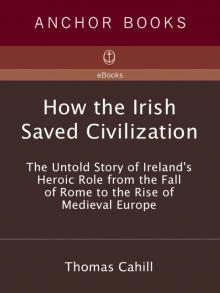 How the Irish Saved Civilization
How the Irish Saved Civilization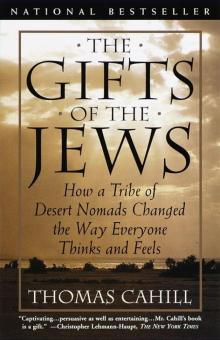 The Gifts of the Jews
The Gifts of the Jews A Saint on Death Row
A Saint on Death Row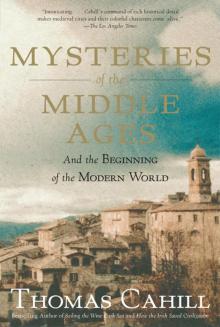 Mysteries of the Middle Ages
Mysteries of the Middle Ages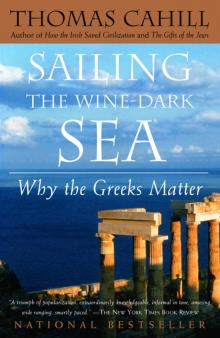 Sailing the Wine-Dark Sea
Sailing the Wine-Dark Sea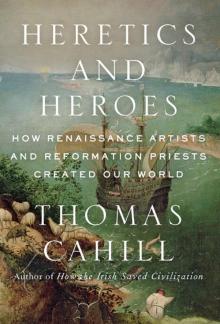 Heretics and Heroes
Heretics and Heroes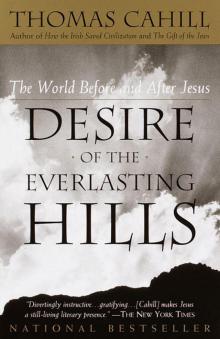 Desire of the Everlasting Hills
Desire of the Everlasting Hills